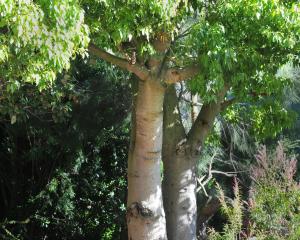Dead, diseased or dying material needs to be removed as it could be a source of future infection. Often damage to plants is mechanical, caused by human impact or weather.
Remove any branches that are crossing which could rub together and cause damage. This is best done at a young age as larger branches can leave an unsightly cut and potential infection point on the trunk.
First look at your plant to decide if it's an individual or whether you want it to merge into the surrounding plants to create a single mass. Sometimes we have no choice as they may have been planted too closely together, but, where possible, a plant will look its best when separated. A clear gap around the plant gives it more stature and helps competing plants survive.
After pruning to the desired shape, you may need to remove some of the congested internal branches.
Opening up the interior allows better air flow and increased light to the remaining branches.
A range of pruned deciduous plants can be seen in the geographic plant collection in the upper Dunedin Botanic Garden.
• Dylan Norfield is the geographic and arboretum collection curator at Dunedin Botanic Garden.











